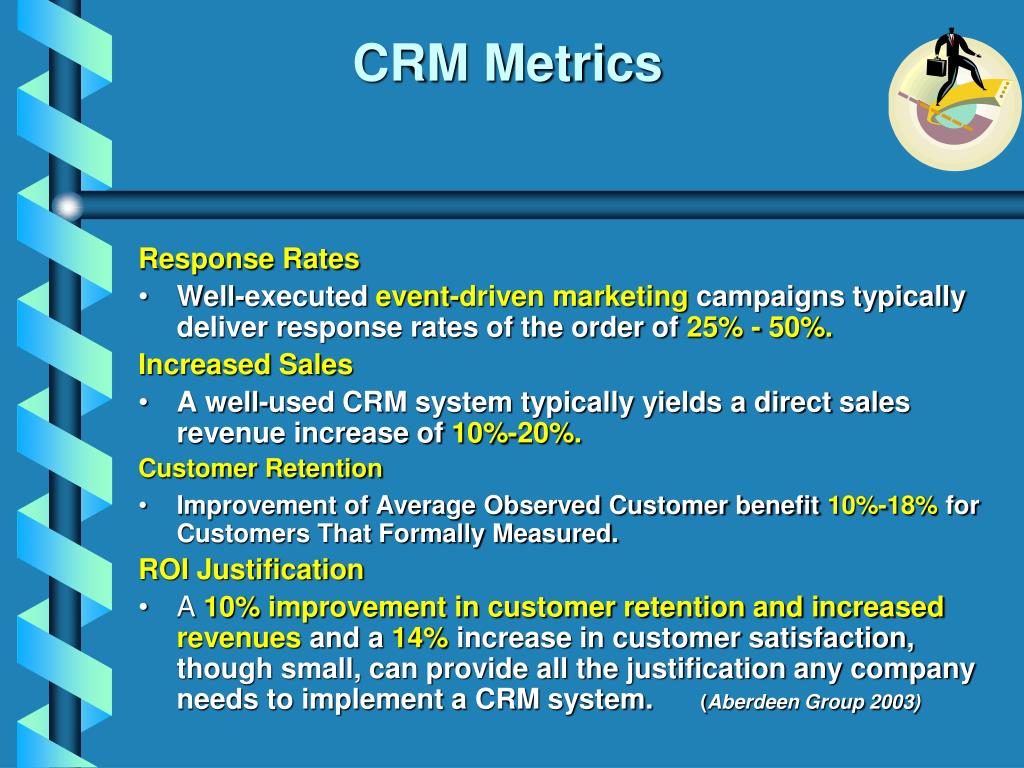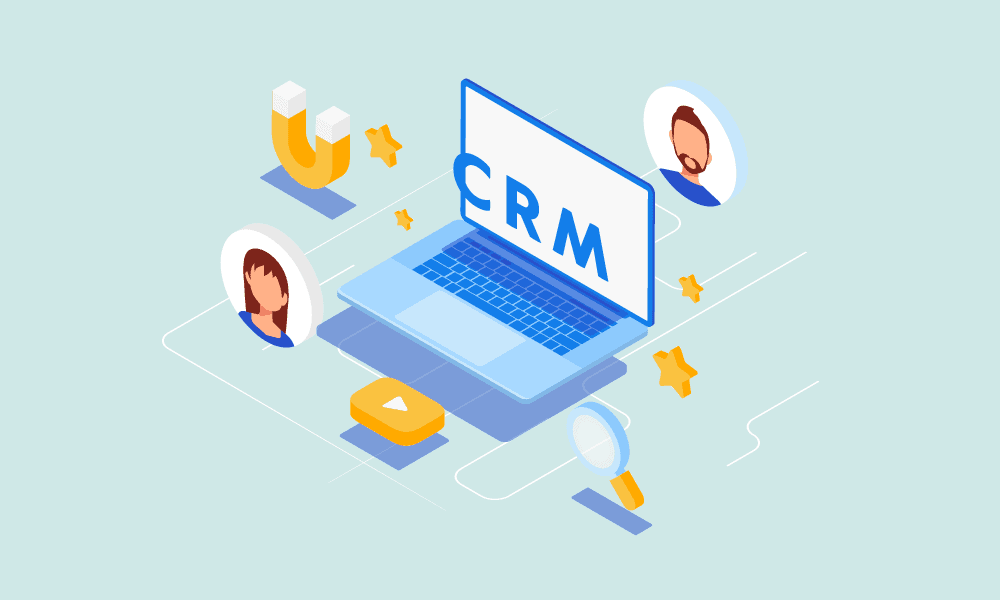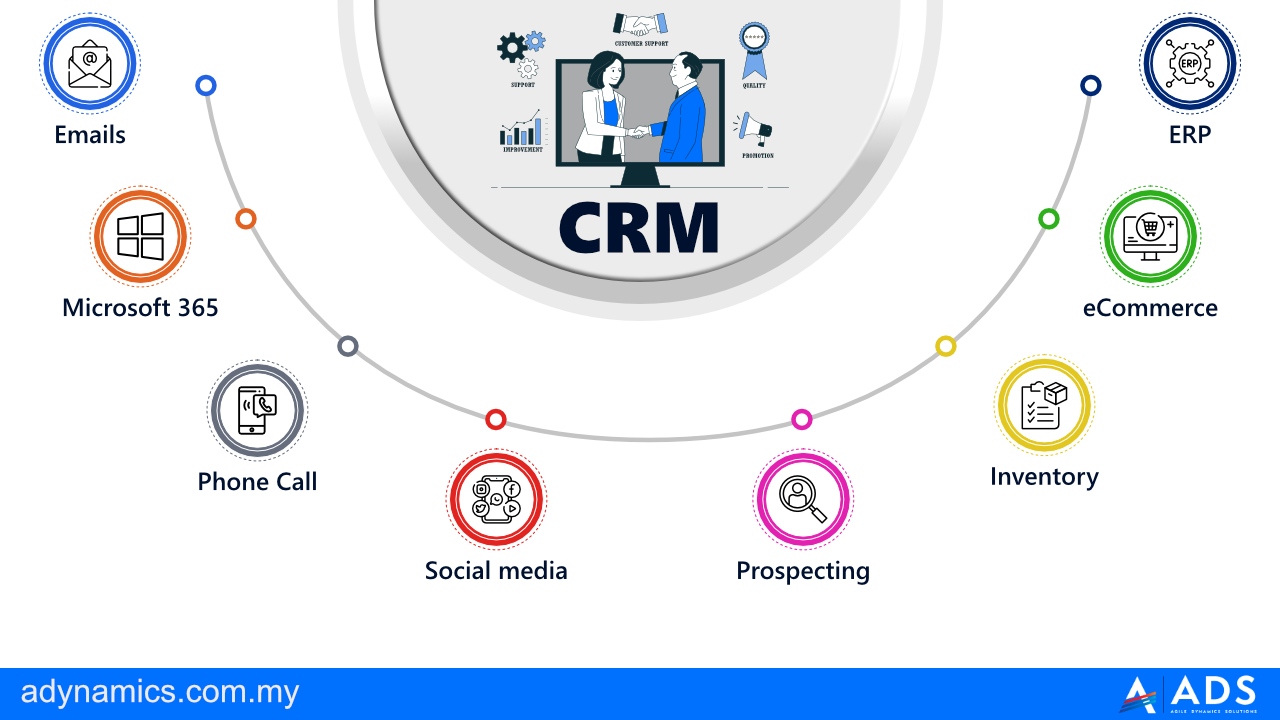
Introduction: The Power of Data in CRM Marketing
In the dynamic world of marketing, data is king. And when it comes to Customer Relationship Management (CRM), the ability to harness and interpret data is what separates thriving businesses from those that struggle to stay afloat. CRM marketing metrics are the compass that guides your strategies, providing invaluable insights into customer behavior, campaign performance, and overall business health. This article delves deep into the critical CRM marketing metrics you need to track, analyze, and leverage to achieve sustainable growth and maximize your return on investment (ROI).
We’ll explore a comprehensive range of metrics, from the fundamental building blocks to the more nuanced indicators of success. By understanding these metrics, you can gain a clearer picture of your customer journey, optimize your marketing efforts, and ultimately, drive revenue and customer loyalty. Forget guesswork; let’s equip you with the knowledge to make data-driven decisions that will propel your CRM marketing to new heights.
I. Core CRM Marketing Metrics: The Foundation of Success
Before diving into advanced analytics, it’s crucial to establish a solid foundation. These core CRM marketing metrics provide a fundamental understanding of your customer base and the effectiveness of your initial marketing campaigns. Monitoring these metrics regularly is the first step towards optimizing your overall strategy.
A. Customer Acquisition Cost (CAC)
Customer Acquisition Cost (CAC) is the total cost of acquiring a new customer. It is calculated by dividing the total marketing and sales expenses by the number of new customers acquired over a specific period. This metric is vital because it tells you how efficiently you’re spending your marketing budget. A high CAC can signal inefficiencies in your acquisition efforts, prompting you to re-evaluate your strategies. A low CAC, on the other hand, indicates that your marketing campaigns are cost-effective.
Formula: CAC = (Total Marketing & Sales Expenses) / (Number of New Customers Acquired)
Why It Matters: Helps you understand the profitability of your customer acquisition efforts and identify areas for improvement. Regularly tracking CAC allows you to identify trends and adjust your budget allocation accordingly.
B. Customer Lifetime Value (CLTV)
Customer Lifetime Value (CLTV) predicts the total revenue a customer will generate throughout their relationship with your business. It’s a crucial metric for understanding the long-term value of your customers and making informed decisions about customer retention strategies. Calculating CLTV involves considering factors like average purchase value, purchase frequency, and customer lifespan.
Formula (Simplified): CLTV = (Average Purchase Value) x (Purchase Frequency) x (Customer Lifespan)
Why It Matters: Provides a long-term perspective on customer profitability, helping you prioritize efforts to retain high-value customers. It also informs decisions about marketing spend, as you can afford to spend more to acquire and retain customers with a higher CLTV.
C. Conversion Rate
Conversion rate measures the percentage of visitors or leads who complete a desired action, such as making a purchase, signing up for a newsletter, or requesting a demo. It’s a critical indicator of how effectively your marketing efforts are converting prospects into customers. Tracking conversion rates across different stages of the sales funnel provides valuable insights into where potential customers are dropping off.
Formula: Conversion Rate = (Number of Conversions) / (Total Number of Visitors or Leads) x 100
Why It Matters: Identifies bottlenecks in your sales funnel and highlights areas for optimization. By analyzing conversion rates, you can pinpoint the specific steps where prospects are losing interest and implement strategies to improve those areas.
D. Website Traffic and Engagement
While not exclusively a CRM metric, website traffic and engagement provide valuable context for understanding the effectiveness of your CRM marketing efforts. Tracking metrics like website visits, bounce rate, time on page, and pages per session helps you assess the impact of your marketing campaigns on driving traffic and engaging your audience.
Metrics to Track: Website visits, bounce rate, time on page, pages per session.
Why It Matters: Provides insights into how effectively your marketing campaigns drive traffic and engage your audience. High bounce rates and low time on page might indicate that your content isn’t resonating with your target audience.
II. Campaign Performance Metrics: Measuring Marketing Campaign Effectiveness
Once you’ve established the core metrics, it’s time to delve into campaign-specific performance indicators. These metrics provide a granular view of how individual marketing campaigns are performing, allowing you to optimize your strategies in real-time.
A. Email Marketing Metrics
Email marketing is a cornerstone of many CRM strategies. Tracking these metrics will help you gauge the effectiveness of your email campaigns, identify what resonates with your audience, and refine your approach.
- Open Rate: The percentage of recipients who opened your email. A high open rate suggests a compelling subject line and a relevant audience.
- Click-Through Rate (CTR): The percentage of recipients who clicked on a link within your email. A high CTR indicates engaging content and a clear call to action.
- Conversion Rate: The percentage of recipients who completed a desired action after clicking on a link in your email, such as making a purchase or filling out a form.
- Unsubscribe Rate: The percentage of recipients who unsubscribed from your email list. A high unsubscribe rate could indicate irrelevant content or poor targeting.
- Bounce Rate: The percentage of emails that were not delivered. A high bounce rate can damage your sender reputation.
Why It Matters: Email marketing metrics help you understand how your email campaigns are performing, allowing you to optimize your subject lines, content, and targeting strategies.
B. Social Media Engagement
Social media is a powerful tool for building brand awareness and engaging with your audience. Tracking these metrics will help you assess the impact of your social media campaigns.
- Reach: The number of unique users who saw your content.
- Engagement Rate: The percentage of users who interacted with your content (likes, comments, shares).
- Click-Through Rate (CTR): The percentage of users who clicked on a link in your social media post.
- Follower Growth: The increase in the number of followers over a specific period.
Why It Matters: Social media engagement metrics provide insights into how your audience is interacting with your brand. They allow you to refine your content strategy and identify the most effective platforms for reaching your target audience.
C. Lead Generation Metrics
If your marketing efforts focus on generating leads, tracking these metrics is crucial for measuring the effectiveness of your lead generation campaigns.
- Lead Conversion Rate: The percentage of leads who convert into customers.
- Cost Per Lead (CPL): The cost of acquiring a single lead.
- Lead Quality: Assessing the quality of leads based on factors like demographics, engagement, and behavior.
Why It Matters: Lead generation metrics help you assess the efficiency and effectiveness of your lead generation efforts. They allow you to optimize your lead generation strategies and improve your conversion rates.
III. Customer Behavior Metrics: Unveiling Customer Insights
Understanding customer behavior is critical for building strong customer relationships and tailoring your marketing efforts to their needs. These metrics provide valuable insights into how customers interact with your brand and what motivates them.
A. Customer Segmentation
Customer segmentation involves dividing your customer base into distinct groups based on shared characteristics, such as demographics, purchase history, or behavior. Analyzing customer segments allows you to personalize your marketing messages and tailor your offers to specific groups.
Metrics to Track: Customer demographics, purchase history, website behavior, engagement with marketing campaigns.
Why It Matters: Customer segmentation enables you to personalize your marketing efforts and improve the relevance of your messages, leading to higher conversion rates and customer satisfaction.
B. Customer Churn Rate
Customer churn rate measures the percentage of customers who stop doing business with your company over a specific period. High churn rates can be detrimental to your business, so it’s crucial to monitor and address them proactively.
Formula: Churn Rate = (Number of Customers Lost) / (Total Number of Customers at the Beginning of the Period) x 100
Why It Matters: Customer churn rate provides insights into customer satisfaction and loyalty. By monitoring churn, you can identify potential issues and implement strategies to retain customers.
C. Customer Satisfaction (CSAT) and Net Promoter Score (NPS)
Customer Satisfaction (CSAT) and Net Promoter Score (NPS) are valuable metrics for measuring customer satisfaction and loyalty. CSAT typically involves asking customers to rate their satisfaction with a specific interaction, while NPS measures the likelihood of customers recommending your company to others.
Why It Matters: CSAT and NPS provide direct feedback on customer satisfaction and loyalty, allowing you to identify areas for improvement and build stronger customer relationships.
D. Customer Journey Mapping
Customer journey mapping involves visualizing the steps a customer takes when interacting with your brand. Analyzing customer journeys helps you identify pain points and opportunities to improve the customer experience.
Metrics to Track: Touchpoints, customer behavior at each touchpoint, customer feedback.
Why It Matters: Customer journey mapping helps you identify areas for improvement in the customer experience, leading to increased customer satisfaction and loyalty.
IV. Sales Performance Metrics: Linking Marketing to Revenue
Ultimately, the success of your CRM marketing efforts is measured by its impact on sales. These metrics help you understand how your marketing campaigns are contributing to revenue generation.
A. Sales Qualified Leads (SQLs)
Sales Qualified Leads (SQLs) are leads that have been qualified by the marketing team and passed on to the sales team for follow-up. Tracking the number of SQLs generated helps you assess the effectiveness of your lead generation efforts.
Why It Matters: SQLs are a direct indicator of the quality of leads generated by your marketing campaigns. A high number of SQLs suggests that your marketing efforts are successfully attracting qualified prospects.
B. Sales Conversion Rate
Sales conversion rate measures the percentage of leads who convert into paying customers. It’s a crucial metric for understanding the efficiency of your sales process.
Formula: Sales Conversion Rate = (Number of Customers) / (Total Number of Leads) x 100
Why It Matters: Sales conversion rate provides insights into the effectiveness of your sales process. By analyzing this metric, you can identify areas for improvement and optimize your sales strategies.
C. Revenue per Customer
Revenue per customer measures the average revenue generated by each customer over a specific period. This metric is crucial for understanding the profitability of your customer base.
Formula: Revenue per Customer = (Total Revenue) / (Number of Customers)
Why It Matters: Revenue per customer provides insights into the profitability of your customer base and helps you identify opportunities to increase revenue.
D. Marketing ROI
Marketing ROI (Return on Investment) measures the profitability of your marketing campaigns. It’s a crucial metric for justifying your marketing budget and demonstrating the value of your marketing efforts.
Formula: Marketing ROI = ((Revenue Generated from Marketing) – (Marketing Expenses)) / (Marketing Expenses) x 100
Why It Matters: Marketing ROI helps you assess the profitability of your marketing campaigns and justify your marketing budget. A high ROI indicates that your marketing efforts are generating a positive return on investment.
V. Leveraging CRM Data for Actionable Insights
Tracking these metrics is only the first step. The real value lies in using the data to make informed decisions and optimize your CRM marketing strategies. Here’s how to leverage the insights you gather:
A. Analyze and Interpret the Data
Regularly analyze your CRM marketing metrics to identify trends, patterns, and anomalies. Look for areas where your campaigns are performing well and areas where they need improvement. Use data visualization tools, such as charts and graphs, to make it easier to understand the data.
Tips: Look for trends, identify outliers, and use data visualization tools.
B. Segment Your Audience
Use the data to segment your audience based on their behavior, demographics, and purchase history. This will allow you to personalize your marketing messages and tailor your offers to specific groups.
Tips: Group customers by demographics, behavior, and purchase history.
C. Personalize Your Marketing Messages
Use the insights you gather to personalize your marketing messages and content. Tailor your messages to resonate with specific customer segments and address their individual needs and interests.
Tips: Tailor messages to specific customer segments.
D. Optimize Your Campaigns
Continuously optimize your marketing campaigns based on the data you collect. Test different subject lines, content, and calls to action to see what resonates best with your audience. Use A/B testing to compare different versions of your campaigns and identify the most effective strategies.
Tips: Test different elements, use A/B testing.
E. Automate Your Marketing Efforts
Use CRM automation tools to streamline your marketing processes and improve efficiency. Automate tasks such as email marketing, lead nurturing, and social media posting to save time and resources.
Tips: Automate email marketing, lead nurturing, and social media posting.
F. Implement a Feedback Loop
Establish a feedback loop to continuously improve your CRM marketing efforts. Collect feedback from customers, analyze your results, and make adjustments to your strategies based on the data you gather. This iterative process will help you refine your approach and achieve better results over time.
Tips: Collect customer feedback, analyze results, and adjust strategies.
VI. Tools and Technologies for Tracking CRM Marketing Metrics
Several tools and technologies can help you track and analyze your CRM marketing metrics. Choosing the right tools will depend on your specific needs and budget.
A. CRM Software
Your CRM software is the central hub for managing customer data and tracking key metrics. Popular CRM platforms include Salesforce, HubSpot, and Zoho CRM. Look for CRM software that offers built-in reporting and analytics capabilities.
B. Marketing Automation Platforms
Marketing automation platforms, such as HubSpot, Marketo, and Pardot, can help you automate your marketing campaigns and track key metrics. These platforms offer advanced analytics and reporting features.
C. Email Marketing Platforms
Email marketing platforms, such as Mailchimp, Constant Contact, and Campaign Monitor, provide detailed analytics on email campaign performance, including open rates, click-through rates, and conversion rates.
D. Web Analytics Tools
Web analytics tools, such as Google Analytics, can help you track website traffic, engagement, and conversions. These tools provide valuable insights into how customers interact with your website.
E. Social Media Analytics Tools
Social media analytics tools, such as Hootsuite, Sprout Social, and Buffer, provide insights into your social media performance, including reach, engagement, and follower growth.
VII. Best Practices for Effective CRM Marketing Metric Tracking
To ensure you’re getting the most out of your CRM marketing metrics, follow these best practices:
A. Define Your Goals and Objectives
Before you start tracking metrics, define your goals and objectives. What do you want to achieve with your CRM marketing efforts? Having clear goals will help you determine which metrics to track and how to measure success.
B. Choose the Right Metrics
Focus on the metrics that are most relevant to your goals and objectives. Don’t try to track everything; instead, prioritize the metrics that will provide the most valuable insights.
C. Establish a Baseline
Before you start tracking metrics, establish a baseline. This will give you a point of reference for measuring progress and identifying trends.
D. Track Metrics Regularly
Track your metrics regularly, such as weekly or monthly, to monitor progress and identify areas for improvement. Consistent tracking will help you stay on top of your performance and make data-driven decisions in a timely manner.
E. Analyze and Interpret the Data
Don’t just collect the data; analyze and interpret it. Look for trends, patterns, and anomalies. Use data visualization tools to make it easier to understand the data.
F. Make Data-Driven Decisions
Use the insights you gather to make data-driven decisions. Use the data to optimize your campaigns, personalize your marketing messages, and improve the customer experience.
G. Review and Refine Your Approach
Regularly review your approach to ensure that you’re tracking the right metrics and making the most of the data. Refine your strategies based on the insights you gather.
VIII. Conclusion: Data-Driven Growth in CRM Marketing
In conclusion, mastering CRM marketing metrics is essential for driving growth and achieving sustainable success. By tracking and analyzing the metrics outlined in this article, you can gain a deeper understanding of your customers, optimize your marketing efforts, and ultimately, increase revenue and customer loyalty. Remember that data is your ally in this journey. Embrace it, analyze it, and use it to make informed decisions. By consistently monitoring, interpreting, and acting upon your CRM marketing metrics, you’ll be well-equipped to navigate the ever-evolving marketing landscape and achieve your business goals. Don’t just react to market trends; proactively shape them with the power of data. The future of CRM marketing is data-driven, and by embracing these principles, you can ensure your place at the forefront of success.

